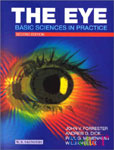1 Anatomy of the eye and orbit
Anatomical terms of reference 1
Osteology of the skull and orbits 2
Structure of the eye 15
Orbital contents 59
Cranial nerves associated with the eye and orbit 67
Ocular appendages (Adnexa) 77
Anatomy of the visual pathway 87
2 Embryology and early development of the eye and adnexa
General embryology 99
Ocular embryology: general introduction 101
Neural crest-derived periocular mesenchyme 106
Development of structures derived from neuroepithelium: the
neural retina and retinal pigment epithelium 110
Optic nerve and disk development 113
Development of the extraocular muscles 114
Development of the fibrous coat of the eye 114
Development of the intraocular contents 115
Development of the uveal tract 118
Development of the anterior chamber angle and aqueous outflow
pathways 121
Development of the eyes and surrounding structures influenced by
the pattern of development of the skull, pharyngeal arches and
face 123
Congenital malformations 128
3 Genetics
Chromosomes and cell division 131
Molecular genetics (DNA and genes) 134
Chromosome defects and gene mutations 136
Clinical genetics 139
Population genetics 142
Understanding the human genome: DNA analysis 143
Molecular biology and clinical medicine 146
Molecular and cell biology: controlling cell destiny 146
Molecular genetics and ophthalmology 148
4 Biochemistry and cell biology
Cells and tissues 155
Biochemical pathways that affect ocular function 168
The ocular surface 174
Cornea and sclera 178
Uveal tract 188
Aqueous humour tract 192
The lens 196
The vitreous 204
The retina 205
Retinal neurochemistry 215
5 Physiology of vision and the visual system
Light detection and dark adaptation 226
Visual acuity and contrast sensitivity 228
Electrophysiology of the visual system 232
Colour vision 241
Visual perception 245
Division of labour in the visual system 254
Control of ocular movement 256
6 General and ocular pharmacology
Pharmacokinetics: drug trafficking in the body 265
Pharmacodynamics: drug handling by the body 271
Drug-receptor interactions 272
Ocular pharmacology: drug handling by cells and tissues of the
eye 274
Delivery methods of ocular medication 275
Reconstituting the tear film 280
Ocular drugs and the autonomic nervous system 281
Clinical control of intraocular pressure 287
The histaminergic system: histamine is released from
conjunctival mast cells during allergic reactions 288
Eicosanoids effect multiple ocular function 289
Serotonin: a potent neurotransmitter 290
Glucocorticoids 291
Immunosuppressive agents: combating ocular inflammatory disease
291
Local anaesthetics: an integral part of opthalmic examination
and surgery 292
Ocular toxicity from systemic administration of drugs 293
7 Immunology
Overview of the immune system 297
Cells and tissues of the immune system 299
Initial response of the host to injury 301
Development of acquired immunity and immunological memory 309
Effector mechanisms 310
Organization of the immune system 325
Antigen recognition 330
The major histocompatibility system 337
T cell activation 340
B cell activation 343
Immunological tolerance and autoimmunity 346
Allergy and immediate hypersensitivity 350
Organ and tissue transplantation 352
Tumours induce immune responses 353
The eye and the immune system 354
8 Microbiology and infection
Host defence mechanisms and bacterial pathogenicity 359
Bacteria 364
Viruses 369
Fungi 376
Intracellular parasites 377
Helminths 379
Antimicrobials 382
Sterilization and disinfectants 385
9 Pathology
Inflammatory diseases 387
Trauma 397
Vascular diseases 400
Metabolic diseases 405
Dystrophies 406
Degenerative disease 409
Phakomatoses, malformations, and chromosomal abnormalities 415
Neoplasia 417
Recent technological advances 432
Inde


